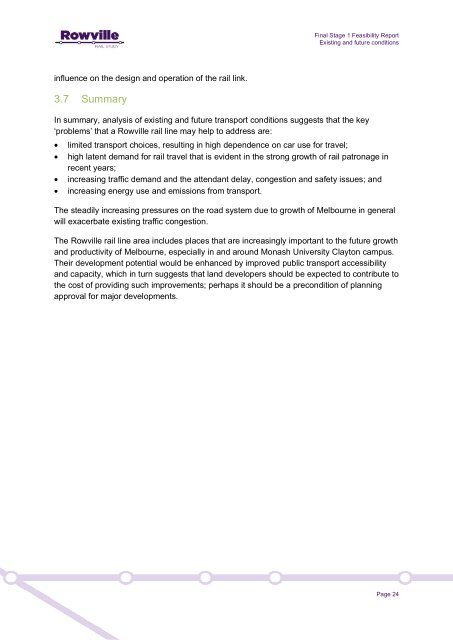Rowville-Rail-Study-Final-Stage-1-Report-FINAL
Rowville-Rail-Study-Final-Stage-1-Report-FINAL
Rowville-Rail-Study-Final-Stage-1-Report-FINAL
You also want an ePaper? Increase the reach of your titles
YUMPU automatically turns print PDFs into web optimized ePapers that Google loves.
influence on the design and operation of the rail link.<br />
3.7 Summary<br />
<strong>Final</strong> <strong>Stage</strong> 1 Feasibility <strong>Report</strong><br />
Existing and future conditions<br />
In summary, analysis of existing and future transport conditions suggests that the key<br />
‘problems’ that a <strong>Rowville</strong> rail line may help to address are:<br />
limited transport choices, resulting in high dependence on car use for travel;<br />
high latent demand for rail travel that is evident in the strong growth of rail patronage in<br />
recent years;<br />
increasing traffic demand and the attendant delay, congestion and safety issues; and<br />
increasing energy use and emissions from transport.<br />
The steadily increasing pressures on the road system due to growth of Melbourne in general<br />
will exacerbate existing traffic congestion.<br />
The <strong>Rowville</strong> rail line area includes places that are increasingly important to the future growth<br />
and productivity of Melbourne, especially in and around Monash University Clayton campus.<br />
Their development potential would be enhanced by improved public transport accessibility<br />
and capacity, which in turn suggests that land developers should be expected to contribute to<br />
the cost of providing such improvements; perhaps it should be a precondition of planning<br />
approval for major developments.<br />
Page 24


